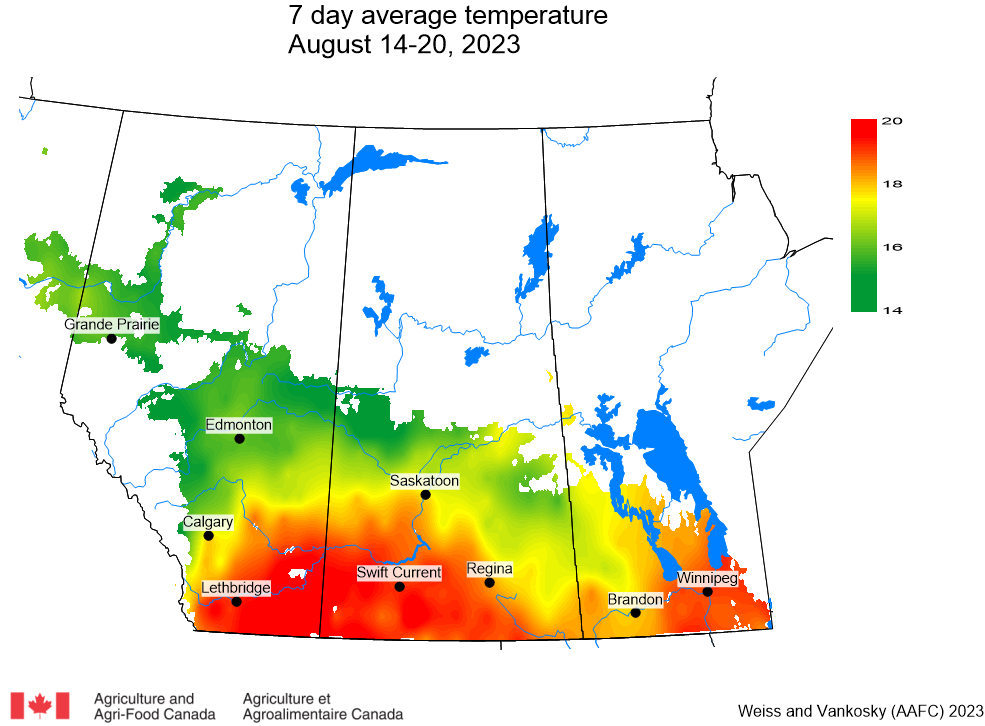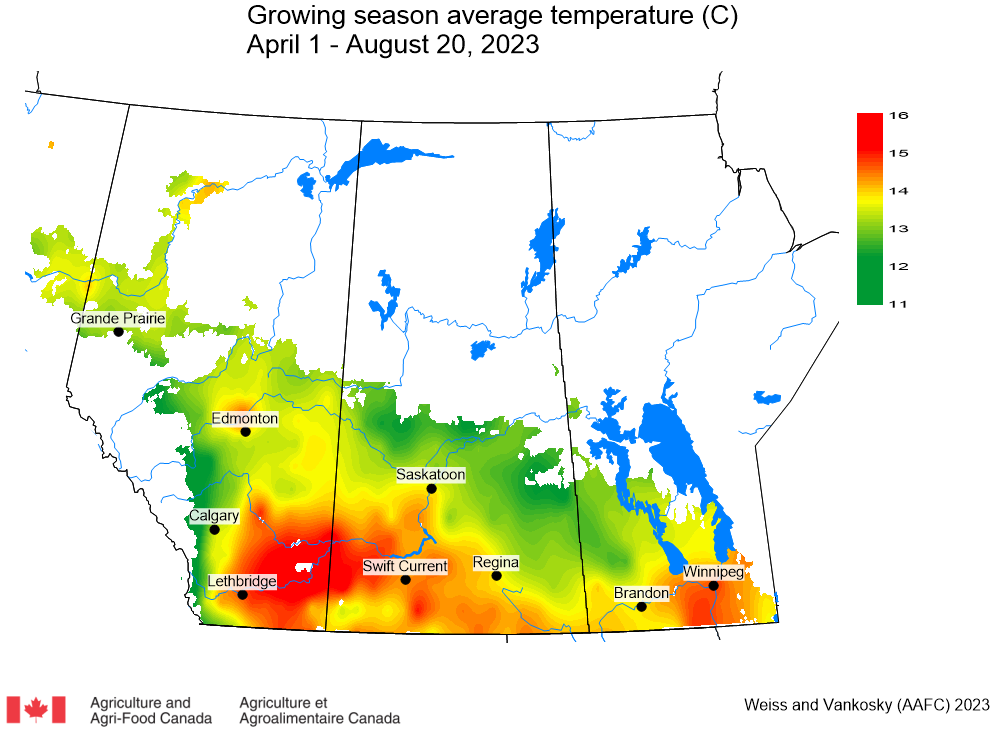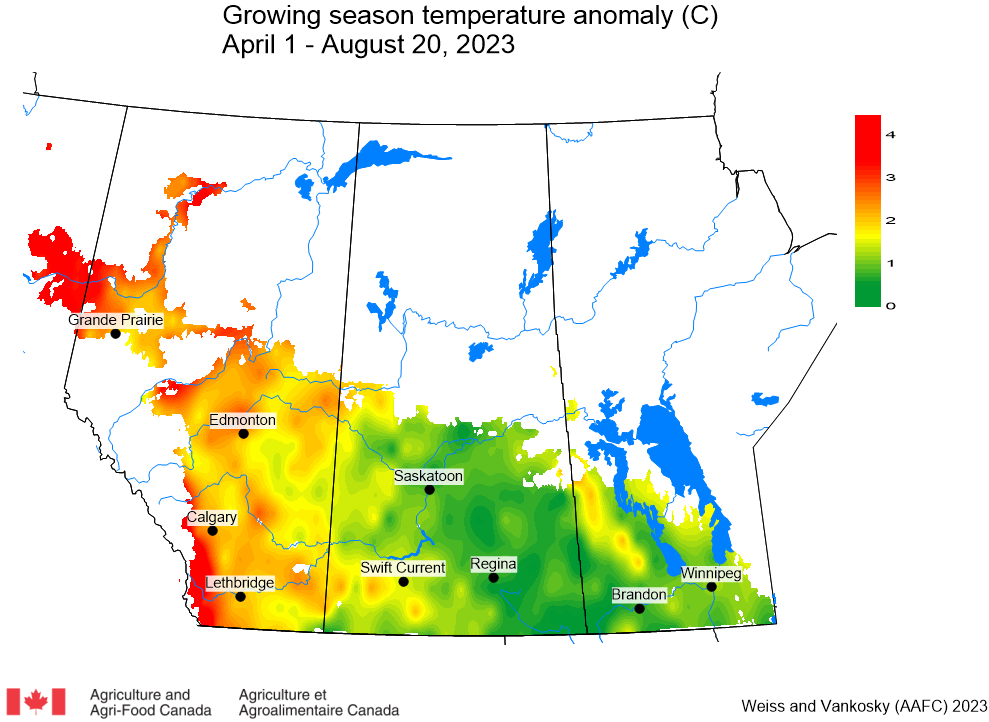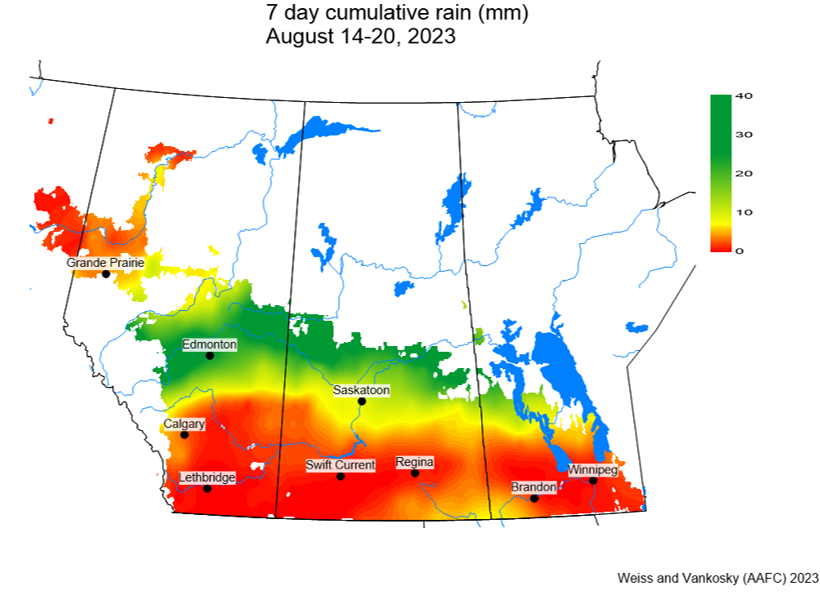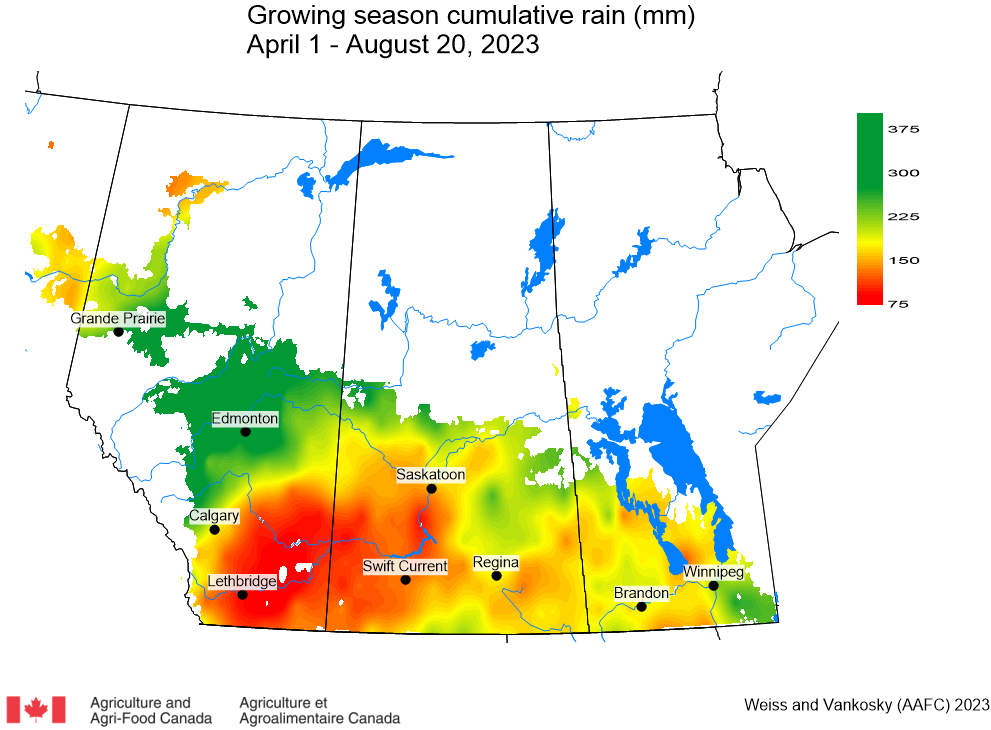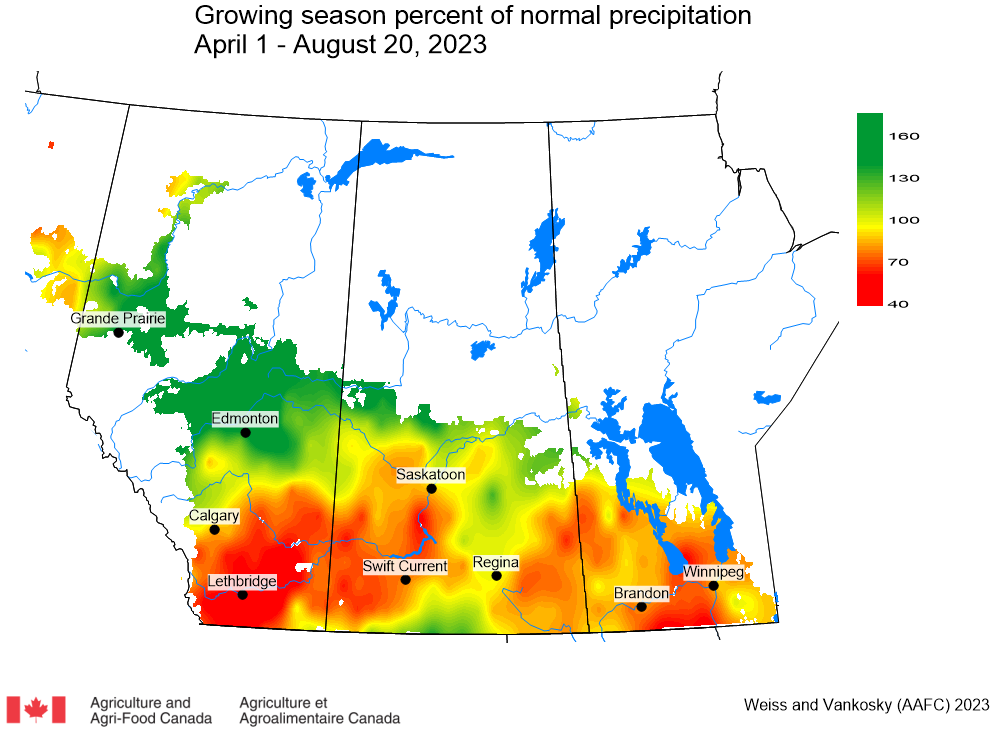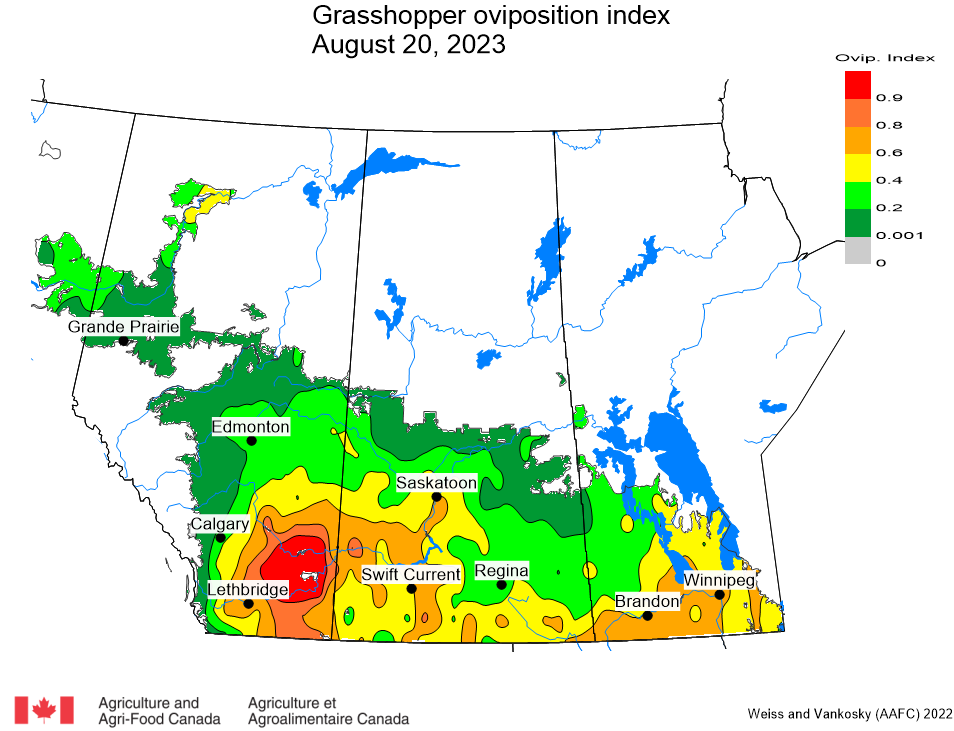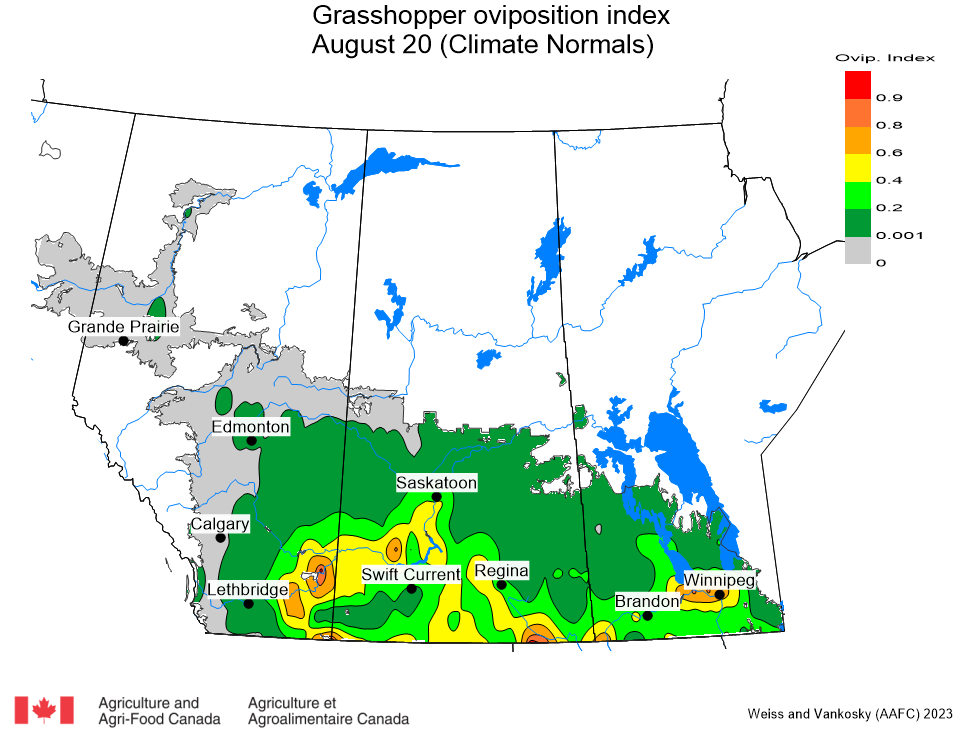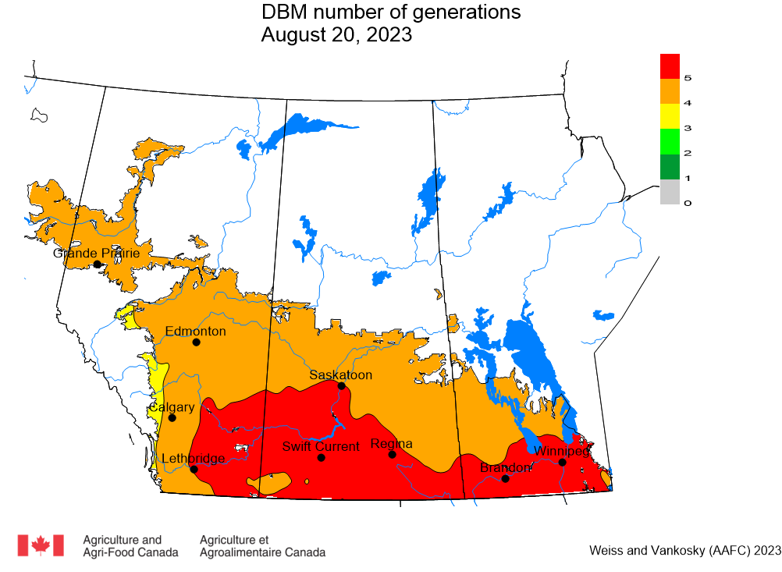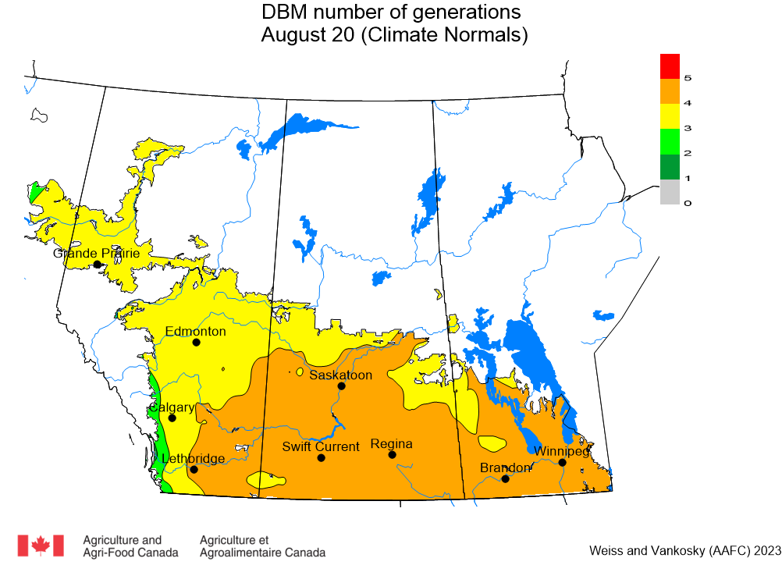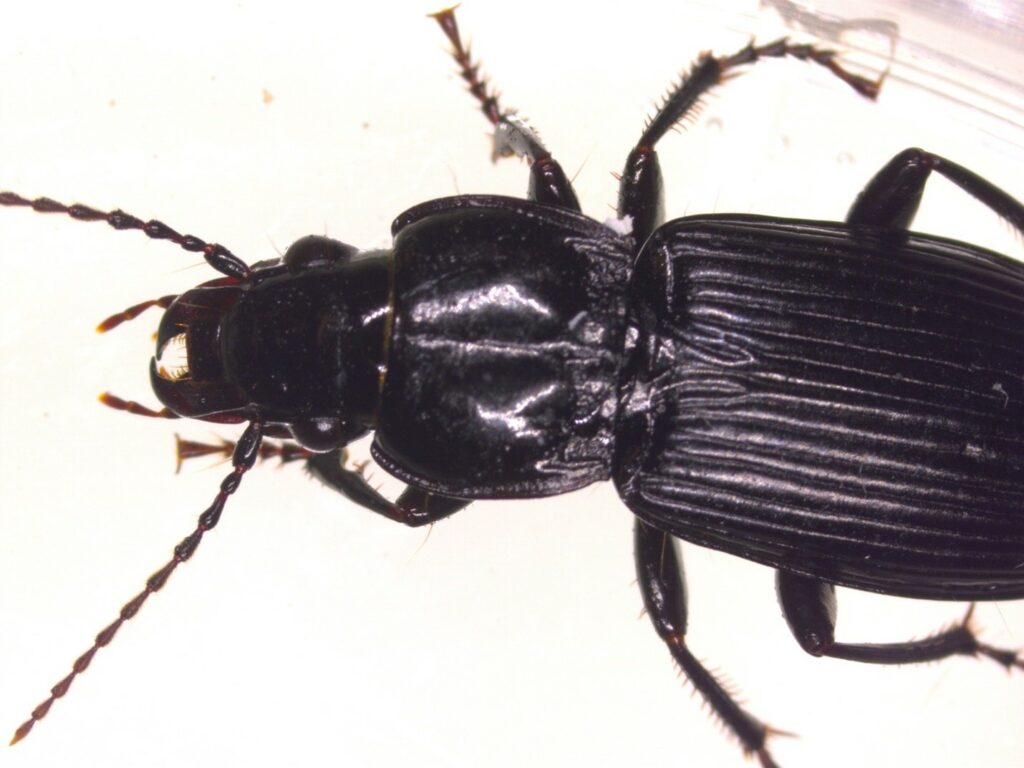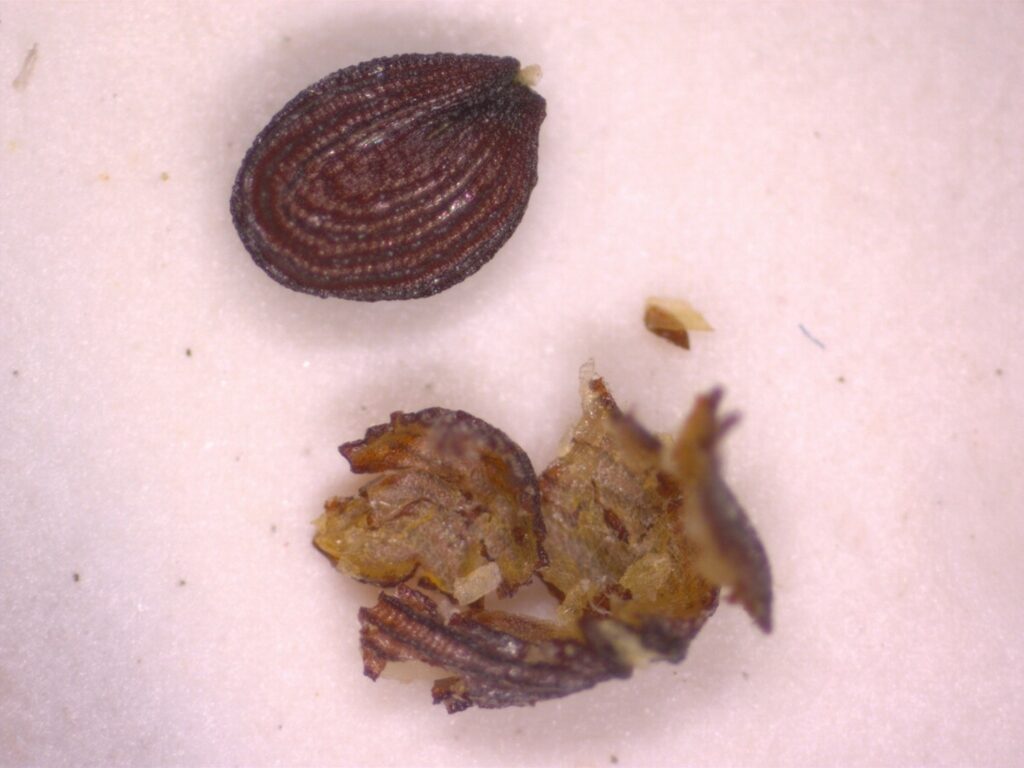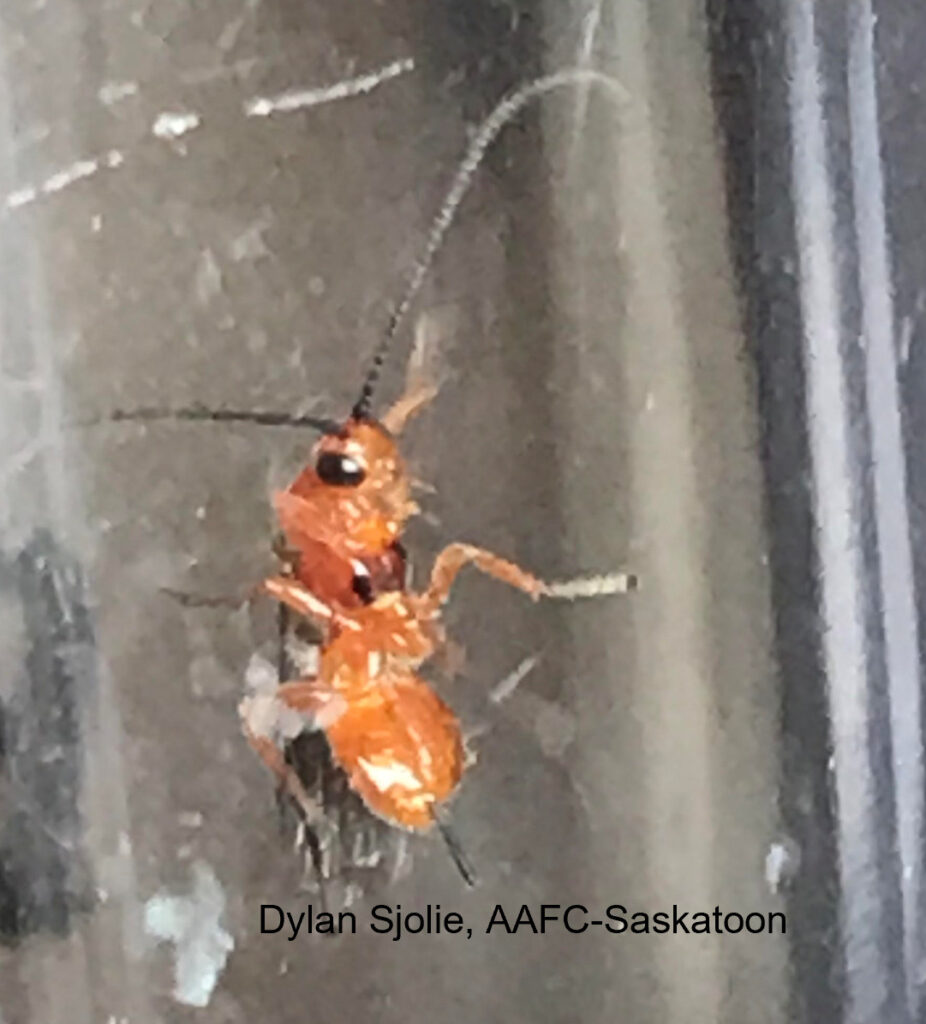Harvest is now well underway and the risk of insect damage to crops is declining as crops mature and are being harvested. This will be the last Weekly Update of 2023. The Prairie Pest Monitoring Network sincerely thanks everyone who has contributed to the 2023 Weekly Updates.
We wish everyone a safe and insect-free harvest season and fall insect scouting season – remember that the annual grasshopper survey is happening now across the prairies and that the wheat midge and wheat stem sawfly surveys will start after harvest is completed.
In 2023, development of many pest insects occurred earlier than normal, thanks to warmer than average weather during this growing season. In particular, we observed adult grasshoppers in mid-June for the first time in more than 30 years (if ever!). Adult grasshoppers will be busy reproducing now, and in looking to next year, insect surveyors are working to estimate grasshopper populations in ditches/roadsides and may be collecting samples of adult grasshoppers for species identification.
Diamondback moth, if present, are into the fifth non-migrant generation across the southern prairies now, with the fourth generation occurring in the more northern parts of the prairies. Diamondback moths could pose a threat to crucifer vegetables right now, as well as any canola that is late to mature.
This week, the Prairie Research post highlights studies being done at the University of Saskatchewan to learn more about the ability of ground beetles to contribute to weed seed management.
Use the links in the Provincial Insect Updates post to learn more about what is happening with populations of insect pests (and beneficial insects) in your province. In Manitoba, Dr. John Gavloski notes that grasshoppers remain a concern, that flea beetles are being found in high numbers on the pods in some canola fields and that some bertha armyworm larvae have been found in some canola fields. Dr. Gavloski also noted that there have been a lot of cabbage white and checkered white butterflies active in Manitoba late this summer. Dr. Vankosky observed high numbers of both butterflies in southeast Saskatchewan too. As in Manitoba, Dr. James Tansey reports that high grasshopper densities are a particular problem in central and southern Saskatchewan.
Remember:
1) There are many resources available to help with planning for late-season insecticide applications to ensure Pre-Harvest Interval requirements are met.
2) Insect Monitoring Protocols containing information about in-field scouting as well as information about insect pest biology and identification are available from the Prairie Pest Monitoring Network.
To receive Weekly Updates automatically, please subscribe to the website!
Questions or problems accessing the contents of this Weekly Update? Please contact Dr. Meghan Vankosky (meghan.vankosky@agr.gc.ca) to get connected to our information. Past Weekly Updates, full of information and helpful links, can be accessed on our Weekly Update page.

